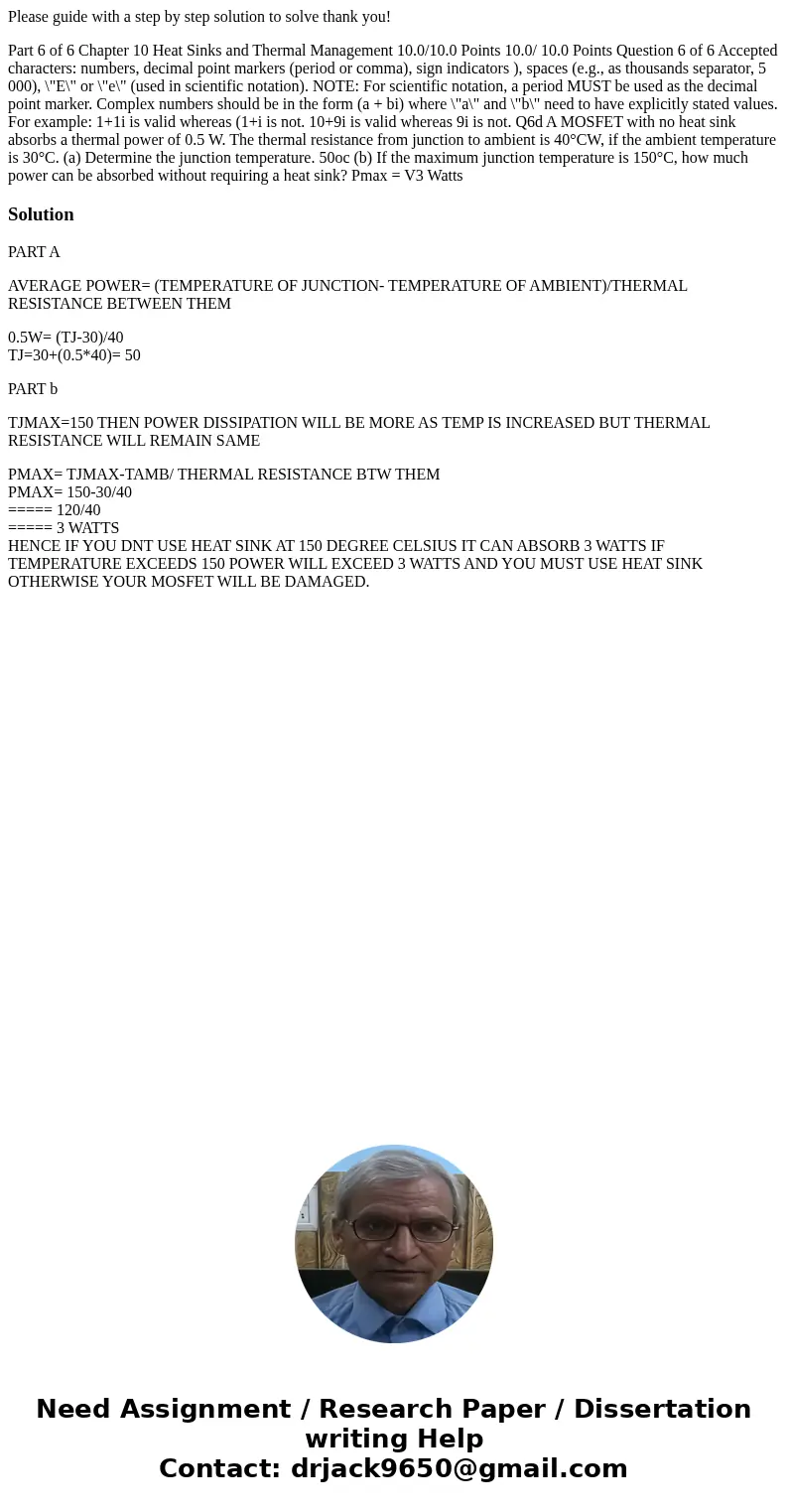Please guide with a step by step solution to solve thank you
Please guide with a step by step solution to solve thank you!
Part 6 of 6 Chapter 10 Heat Sinks and Thermal Management 10.0/10.0 Points 10.0/ 10.0 Points Question 6 of 6 Accepted characters: numbers, decimal point markers (period or comma), sign indicators ), spaces (e.g., as thousands separator, 5 000), \"E\" or \"e\" (used in scientific notation). NOTE: For scientific notation, a period MUST be used as the decimal point marker. Complex numbers should be in the form (a + bi) where \"a\" and \"b\" need to have explicitly stated values. For example: 1+1i is valid whereas (1+i is not. 10+9i is valid whereas 9i is not. Q6d A MOSFET with no heat sink absorbs a thermal power of 0.5 W. The thermal resistance from junction to ambient is 40°CW, if the ambient temperature is 30°C. (a) Determine the junction temperature. 50oc (b) If the maximum junction temperature is 150°C, how much power can be absorbed without requiring a heat sink? Pmax = V3 WattsSolution
PART A
AVERAGE POWER= (TEMPERATURE OF JUNCTION- TEMPERATURE OF AMBIENT)/THERMAL RESISTANCE BETWEEN THEM
0.5W= (TJ-30)/40
TJ=30+(0.5*40)= 50
PART b
TJMAX=150 THEN POWER DISSIPATION WILL BE MORE AS TEMP IS INCREASED BUT THERMAL RESISTANCE WILL REMAIN SAME
PMAX= TJMAX-TAMB/ THERMAL RESISTANCE BTW THEM
PMAX= 150-30/40
===== 120/40
===== 3 WATTS
HENCE IF YOU DNT USE HEAT SINK AT 150 DEGREE CELSIUS IT CAN ABSORB 3 WATTS IF TEMPERATURE EXCEEDS 150 POWER WILL EXCEED 3 WATTS AND YOU MUST USE HEAT SINK OTHERWISE YOUR MOSFET WILL BE DAMAGED.

 Homework Sourse
Homework Sourse